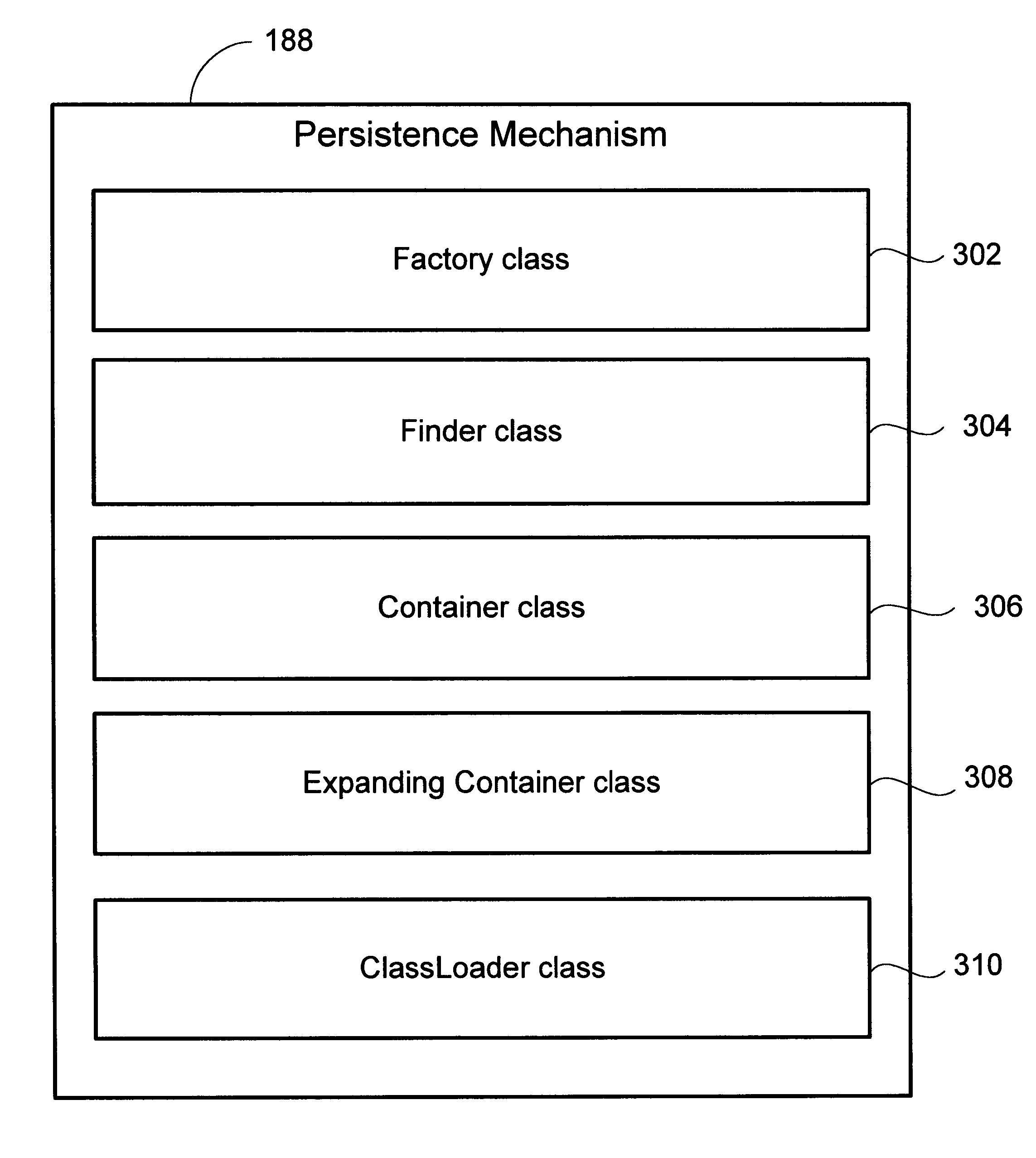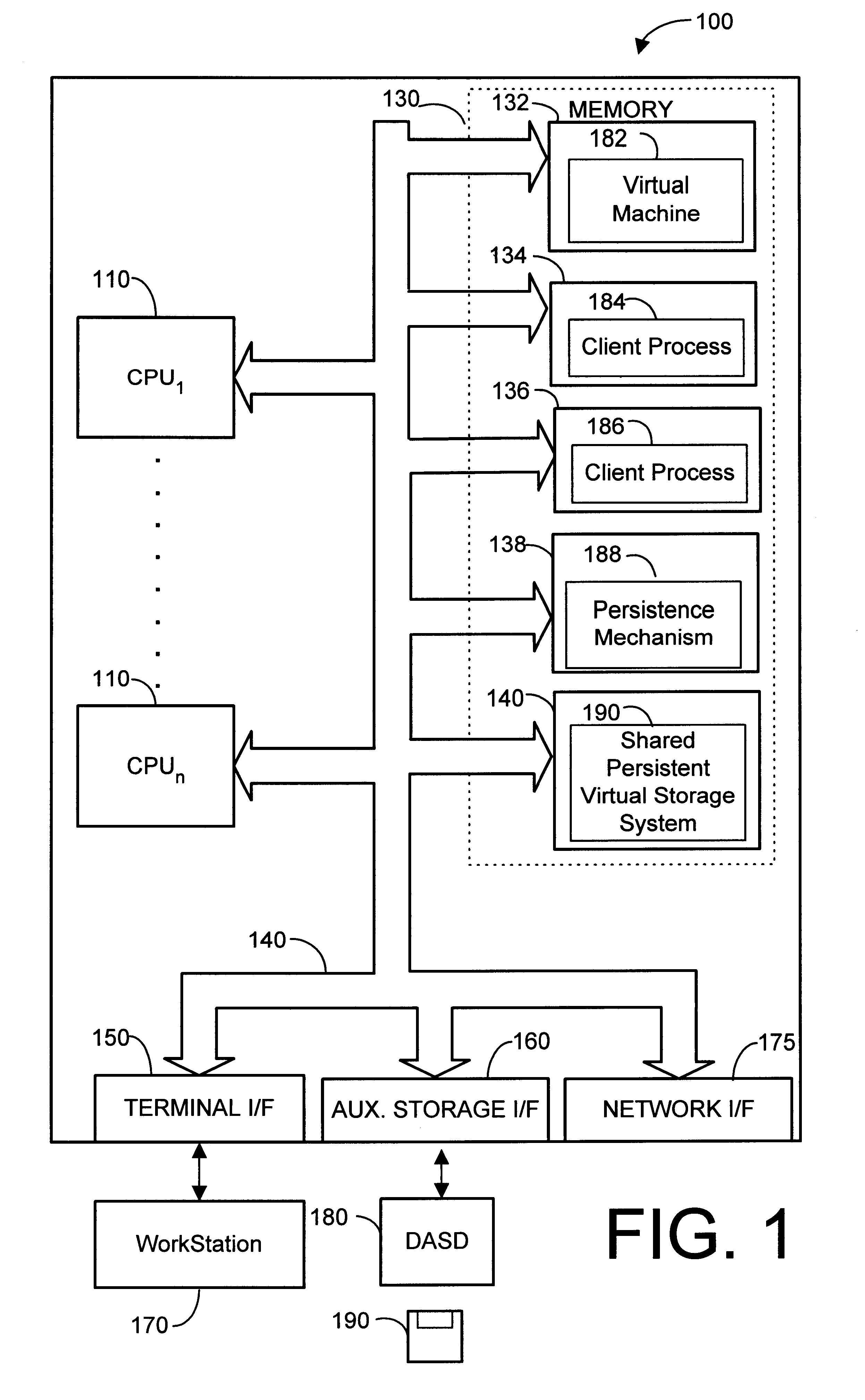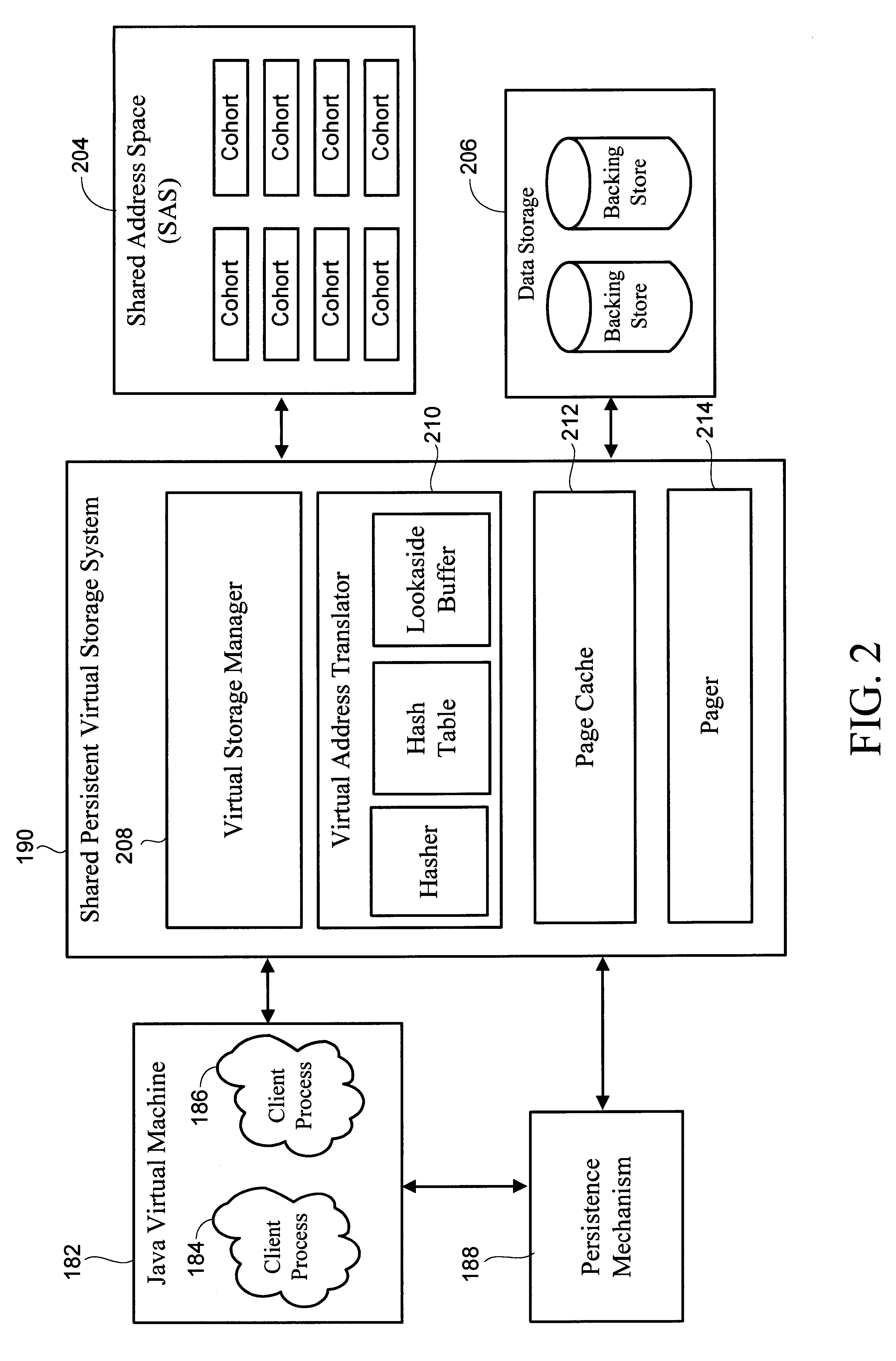System and method for storage of shared persistent objects
- Summary
- Abstract
- Description
- Claims
- Application Information
AI Technical Summary
Problems solved by technology
Method used
Image
Examples
Embodiment Construction
Referring now to FIG. 1, a computer system 100 in accordance with a preferred embodiment of the present invention includes: a plurality of Central Processing Units (CPUs) 110; a terminal interface 150; an auxiliary storage interface 160; a workstation 170; a Direct Access Storage Device (DASD) 180; a bus 140; and a memory 130 which includes multiple locations for containing various software programs. In this example, memory 130 includes a Virtual Machine 182 (VM) running in location 132, a first client process 184 residing in location 134, a second client process 186 running in location 136, a Persistence mechanism 188 residing in location 138 and a Shared Persistent Virtual Storage system 190 running in location 140.
Persistence mechanism 188 and Shared Persistent Virtual Storage system 190 work in conjunction to provide persistent storage to data generated by client process 184 and client process 186. Specifically, Persistence mechanism 188 defines a Factory class, a Container clas...
PUM
 Login to View More
Login to View More Abstract
Description
Claims
Application Information
 Login to View More
Login to View More - R&D
- Intellectual Property
- Life Sciences
- Materials
- Tech Scout
- Unparalleled Data Quality
- Higher Quality Content
- 60% Fewer Hallucinations
Browse by: Latest US Patents, China's latest patents, Technical Efficacy Thesaurus, Application Domain, Technology Topic, Popular Technical Reports.
© 2025 PatSnap. All rights reserved.Legal|Privacy policy|Modern Slavery Act Transparency Statement|Sitemap|About US| Contact US: help@patsnap.com



